The Magic Flute/Trollflöjten | Ingmar Bergman (Opera Film 1975)
The Magic Flute (Swedish: Trollflöjten) is Ingmar Bergman's 1975 film version of Mozart's opera Die Zauberflöte. Audio in Swedish with English subtitles.
It was intended as a television production and was first shown on Swedish television on 1 January 1975, but was followed by a theatrical release later that year. The work is widely viewed as one of the most successful films of an opera ever made, and as an unusual item among the director's works. The film won BAFTA TV Award for Best Foreign Television Programme in 1976 and was nominated for Golden Globe for Best Foreign Language Film.
In 1968, the Swedish poet Alf Henrikson prepared a Swedish-language version of the libretto for the purpose of a performance by the Royal Swedish Opera, which Bergman adopted as the basis of his script. However, Bergman altered the libretto in a number of respects: Sarastro is Pamina's father, trios in act 2 are omitted, and "Ein Mädchen oder Weibchen" is sung by Papageno just before he sees Papagena. Instead of his usual costume of plumage, Papageno wears conventional clothing. The roles of the Three Slaves, originally spoken roles assigned to adult actors, are given to children, who are silent.
In producing the opera, Bergman sought to fulfill his early dream of a production in the Drottningholm Palace Theatre (one of the few surviving Baroque theatres in the world). This setting would also approximate the conditions of the original 1791 production in the Theater auf der Wieden in Vienna. The introductory exterior shots of the film are intended to suggest that it was indeed filmed in the Drottningholm theatre. However, the scenery at Drottningholm "was considered too fragile to accommodate a film crew. So the stage – complete with wings, curtains, and wind machines – was painstakingly copied and erected in the studios of the Swedish Film Institute". Bergman asked his friend Hans Schmidt-Isserstedt to conduct the opera, but he flatly refused. Choir conductor Eric Ericson also declined at first but was later persuaded by Bergman to take it on. The cinematographer was Bergman's longtime colleague Sven Nykvist. In addition to the singers who appeared in the film, the musical forces included the Swedish Radio Symphony Orchestra and Ericsson's own choir, the Swedish Radio Choir.
Cast & Characters:
Josef Köstlinger – Tamino
Britt-Marie Aruhn [sv]; Kirsten Vaupel [sv]; Birgitta Smiding [sv] – Three Ladies
Håkan Hagegård – Papageno
Birgit Nordin – Queen of the Night
Irma Urrila – Pamina
Ragnar Ulfung – Monostatos
Ulrik Cold – Sarastro
Elisabeth Erikson [sv] – Papagena
Erik Saedén – Speaker
Gösta Prüzelius – First Priest
Ulf Johanson – Second Priest
Hans Johansson and Jerker Arvidson [sv] – Two Sentries in Armor
Einar Larson, Siegfried Svensson, Sixten Fark, Sven-Eric Jacobsson, Folke Jonsson, Gösta Bäckelin, Arne Hendriksen, Hans Kyhle, Carl Henric Qvarfordt – Nine Priests
Urban Malmberg [sv], Ansgar Krook [sv], Erland von Heijne – Three Boys
Unknown – First, Second, and Third Slaves
-
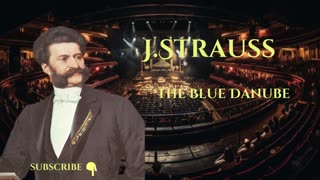 9:26
9:26
Relaxing Music Soul
5 months agoJohann Strauss | The Blue Danube Waltz | Johann Strauss's Enchanting Masterpiece
2015 -
 2:08:59
2:08:59
Gnostic Library
10 months ago💥 MOZART ❯ The Magic Flute Die Zauberfloete Karajan 🎶
32 -
 8:14:13
8:14:13
TradCatholicCore
1 year agoBach, Mozart, Debussy and others. 8hrs of classical instrumental music
433 -
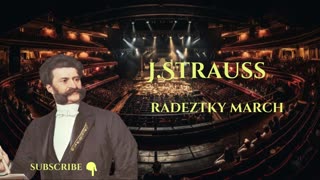 2:58
2:58
Relaxing Music Soul
5 months agoJohann Strauss | Viennese Delights - A Journey Through Strauss's | Musical Masterpieces
1822 -
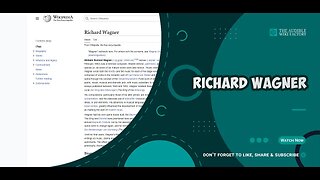 56:30
56:30
The Audible Wiki Factory
1 year agoWilhelm Richard Wagner was a German composer, theatre director, polemicist, and conductor who
383 -
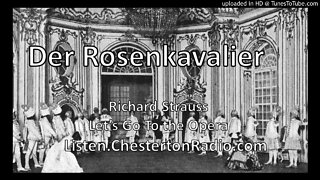 25:54
25:54
Chesterton Radio
3 years agoDer Rosenkavalier - Richard Strauss - Let's Go To The Opera
9 -
 1:14:25
1:14:25
Purrfect Music
1 year agoThe GREATS of Mozart Symphonies - Prague, Haffner, and 29!
38 -
 9:00:36
9:00:36
Purrfect Music
1 year agoClassical Music by Mozart, Strauss, Schubert, Schmidt and Hummel.
127 -
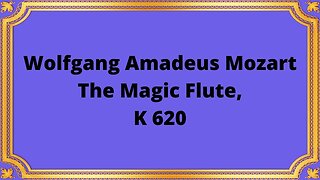 1:59:56
1:59:56
Classical music_Music Inspiration
1 year agoWolfgang Amadeus Mozart The Magic Flute, K 620
36 -
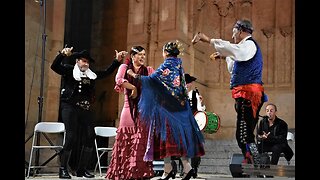 3:41
3:41
Musicas para relaxamento espiritual, Mantras, Musicas Espirituais, Musicas Xamanicas, Musicas para Meditar, Musicas reiki, Indianas, Musicas para Dormir
1 year ago $0.01 earnedGypsy music dancing, the Gypsy Magic - Musica Ciganas a Dançar #astrology #gipsy #musicacigana
469